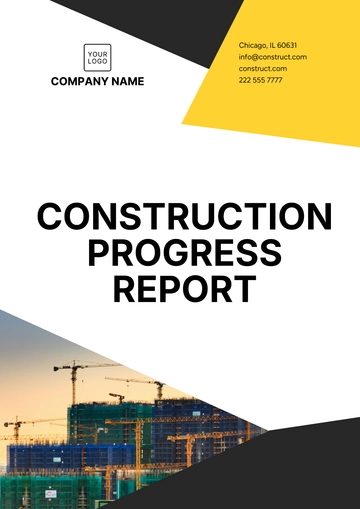Environmental Impact Project Report
Prepared by: [YOUR NAME]
I. Introduction
This report aims to provide a comprehensive analysis of the environmental impact associated with the proposed project. It will evaluate the potential effects on local ecosystems, wildlife, air and water quality, as well as social and economic impacts on nearby communities. The purpose is to facilitate informed decision-making and ensure sustainable practices are adhered to throughout the project's lifecycle.
II. Project Description
The proposed project involves the construction of a solar power plant near the coastal region, spanning approximately 500 acres. The initiative seeks to promote renewable energy sources and contribute to reducing carbon emissions. Key components include solar panel installations, a control room, and a substation linked to the existing power grid.
Objectives
To generate clean, renewable energy
To reduce dependency on fossil fuels
To minimize carbon footprint and greenhouse gas emissions
To create job opportunities in the renewable energy sector
Project Timeline
Phase | Description | Duration |
|---|
Phase 1 | Site preparation and initial setup | 6 months |
Phase 2 | Solar panel installation | 12 months |
Phase 3 | Commissioning and testing | 3 months |
Phase 4 | Full operational launch | 1 month |
III. Environmental Impact Assessment
Air Quality
The implementation of the solar power plant is expected to positively influence air quality by reducing reliance on fossil fuels, thereby decreasing air pollutants such as sulfur dioxide and nitrogen oxides. Nonetheless, there might be some temporary air emissions during construction due to machinery operation and land preparation.
Water Quality and Resources
The project demands minimal water usage, primarily for the cleaning of solar panels. Measures will be taken to ensure water conservation and prevent contamination of nearby water bodies. Regular monitoring and maintenance will be conducted to mitigate potential negative impacts.
Wildlife and Biodiversity
The construction site was selected due to its low ecological sensitivity. However, careful considerations will be implemented to protect local flora and fauna. Efforts include scheduled wildlife surveys, habitat conservation plans, and buffer zones around critical habitats.
Land Use and Landscape
The project is set within an area designated for industrial development, minimizing displacement of current land uses. Landscape integration strategies will include planting native species and designing the site to harmonize with the surrounding environment.
IV. Social and Economic Impact
Community Engagement
Continuous stakeholder engagement is planned to address community concerns and ensure transparent communication. Public consultations and information sessions will be held regularly to provide updates and gather feedback.
Economic Benefits
The project is anticipated to bring numerous economic benefits to the region, such as job creation during both construction and operational phases. Additionally, the local economy will benefit from increased demand for services and materials.
Health and Safety
Rigorous health and safety protocols will be implemented to safeguard workers and the public. Emergency response plans, regular safety audits, and training programs will be established to avert potential accidents or health risks.
V. Mitigation Measures
Implement dust control measures during construction to mitigate air quality impact.
Employ erosion control tactics to protect water bodies from sedimentation.
Schedule construction activities to avoid critical wildlife seasons.
Use native plants for landscaping to enhance site integration and biodiversity.
VI. Conclusion
The environmental impact project report demonstrates that while there are potential risks associated with the solar power plant project, they are manageable through conscientious planning and mitigation strategies. This initiative not only serves the goal of generating clean energy but also underscores a commitment to environmental sustainability and community development. Ongoing monitoring, stakeholder communication, and adaptive management will be crucial to ensure the project's success and minimal environmental impact.
Report Templates @ Template.net






























